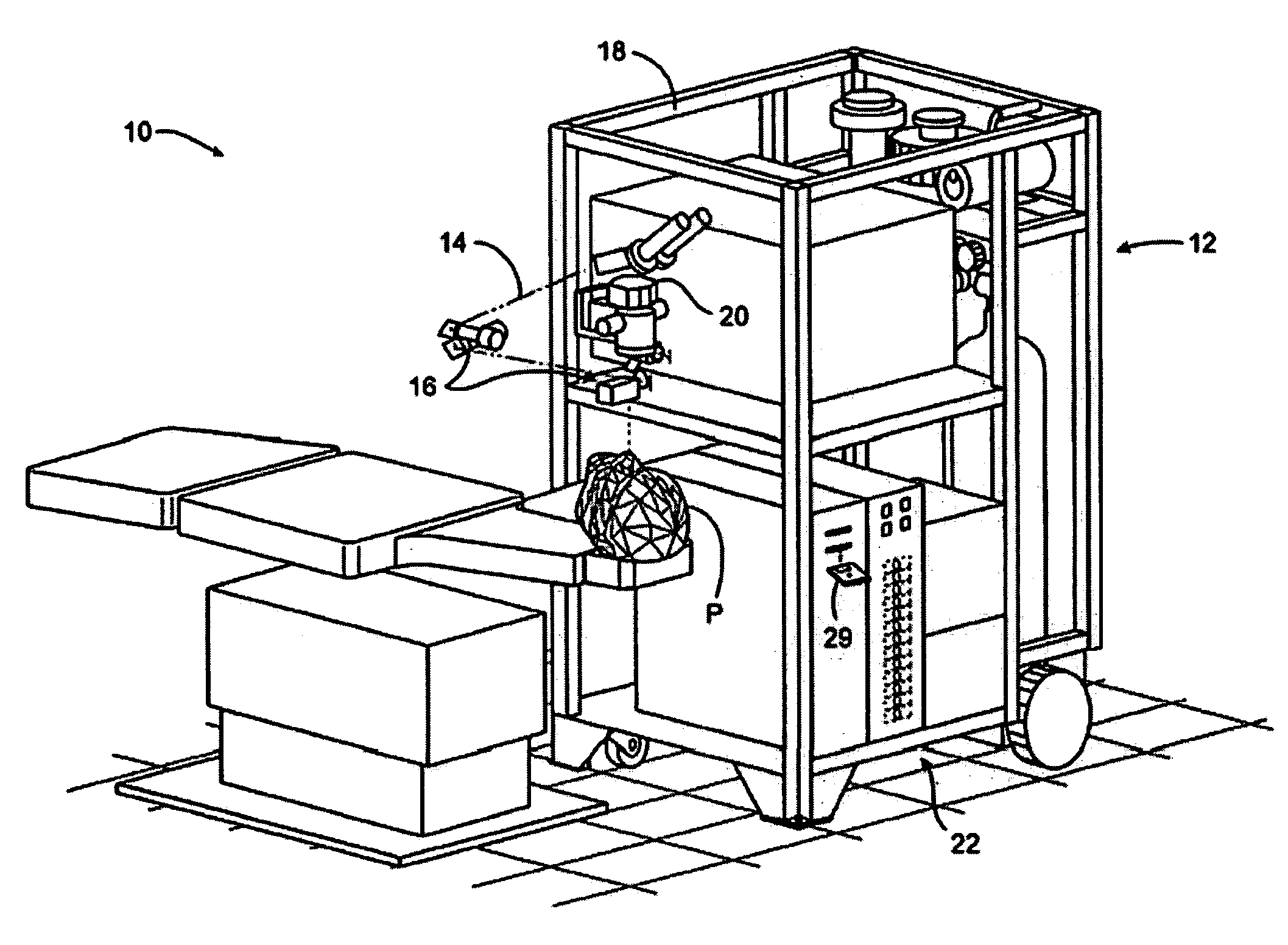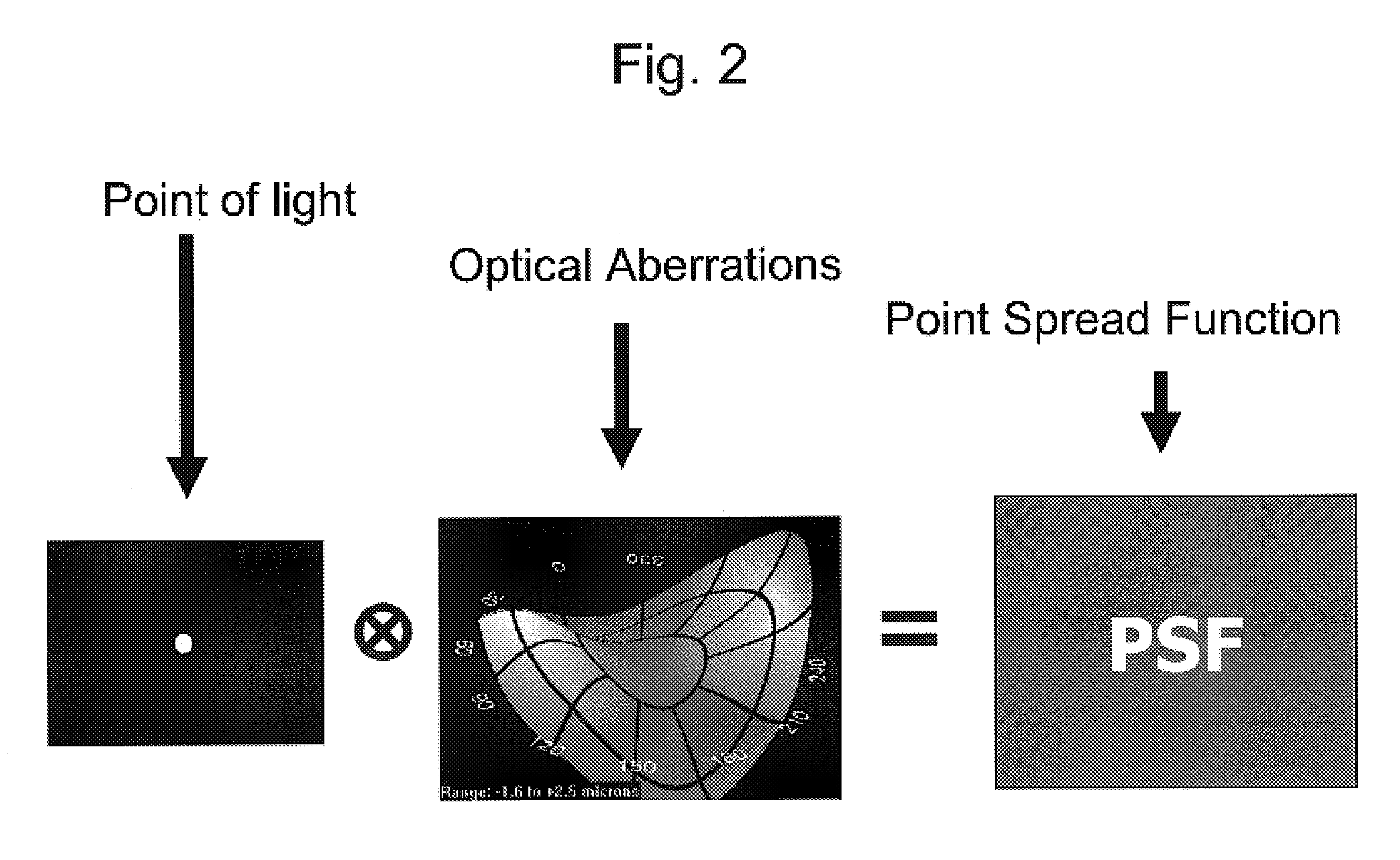Volumetric point spread function for eye diagnosis and treatment
a technology of eye diagnosis and treatment, applied in the field of optical system analysis, can solve problems such as not necessarily capturing the subtleties of the human visual system
- Summary
- Abstract
- Description
- Claims
- Application Information
AI Technical Summary
Benefits of technology
Problems solved by technology
Method used
Image
Examples
Embodiment Construction
[0057]The present generally provides improved systems and methods for analysis and / or treatment of a patient's vision. In many embodiments, the invention makes use of aberration data for a particular patient, with the aberration data often being provided using a wavefront sensor. The invention often makes use of a point spread function (“PSF”), and in general provides improvements in the calculation and visualization of aberration data (and particularly wavefront-data driven point spread functions).
[0058]While a wide variety of parameters may be determined to help characterize aberration information, the point spread function has particular advantages. For example, the point spread function can help allow physicians to see aberrations as the patient sees them. Known methods for calculating a point spread function are often based on long-standing optical techniques. These methods may have been derived from and / or are suited to use in astronomy and laser science, but do not always cap...
PUM
 Login to View More
Login to View More Abstract
Description
Claims
Application Information
 Login to View More
Login to View More - R&D
- Intellectual Property
- Life Sciences
- Materials
- Tech Scout
- Unparalleled Data Quality
- Higher Quality Content
- 60% Fewer Hallucinations
Browse by: Latest US Patents, China's latest patents, Technical Efficacy Thesaurus, Application Domain, Technology Topic, Popular Technical Reports.
© 2025 PatSnap. All rights reserved.Legal|Privacy policy|Modern Slavery Act Transparency Statement|Sitemap|About US| Contact US: help@patsnap.com



